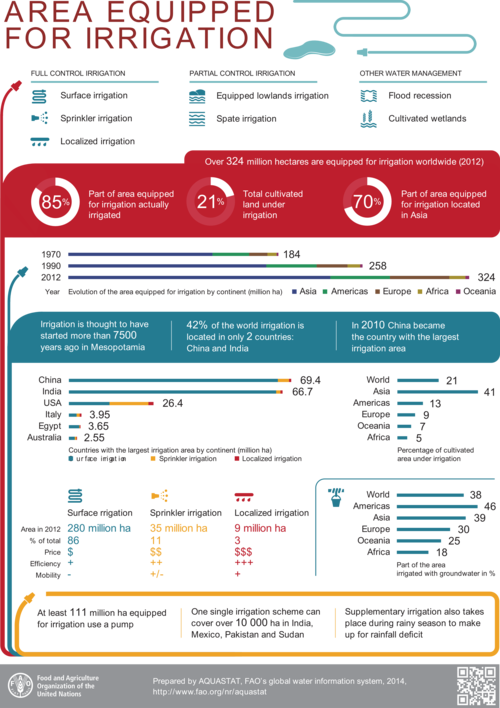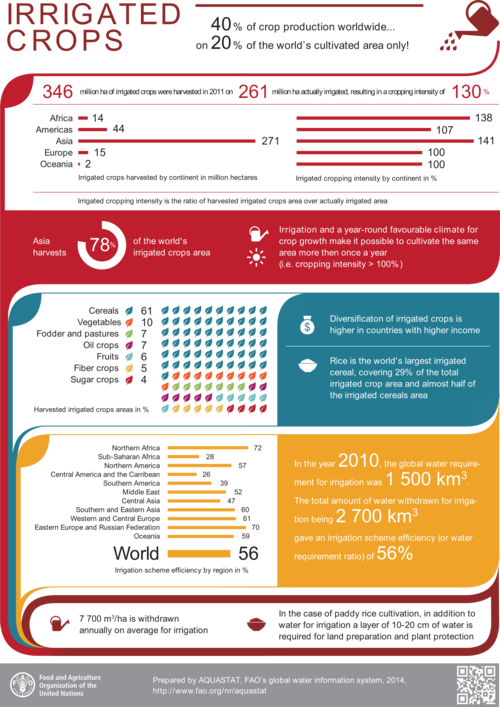Irrigation systems
At the beginning of the 21st century, the world faces a water crisis, both of quantity and quality, caused by continuous population growth, industrialization, food production practices, increased living standards and poor water use strategies. Agriculture is the single largest user of fresh water with an estimated 70 %. Hence, there is a complex relationship between water quantity and quality, agriculture and food quality, which is in turn linked to human and ecological health. Investment in increased irrigation efficiency will not only have very substantial effects on overall water consumption and first phase wastewater production, it will also significantly reduce food prices, increasing food production potential, and hence agricultural development and rural poverty reduction. (Corcoran et al. 2010)
One of the most important and far-reaching reforms is the irrigation management transfer that has been taking place in more than 57 countries on 5 continents since the 1960s. Overall, this transferring of responsibility and authority for managing irrigation systems from the public sector to the community has forced a new look at how services are provided to users and a move from supply-driven to demand-driven approaches. In addition, the closer involvement of water user associations has resulted in increased accountability, transparency and responsibility. (WWAP 2009)
Improving wastewater management will be crucial and finding ways to reduce, optimize and recycle water will become increasingly essential in future. Wastewater is already being used for irrigation and fertilization and can continue to expand this role. (Corcoran et al. 2010)
On the right side, you can find important facts about irrigation worldwide.
The most common irrigation systems are listed below.

